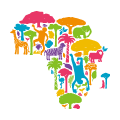1. Approach’s Outline and Features
This is an approach to enhance sustainability of forest conservation management through an integrated approach which is composed of developing a long-term strategic plan which restructures governmental organizations’ and communities’ activities, and of establishing its implementation structure and its underpinning financial mechanisms in collaboration with multi-stakeholders including private sector.
- Restructuring of governmental organizations’ and communities’ activities to develop into a long-term plan:
- Monitoring and facilitation of law enforcement activities by Department of Forestry(DOF) (i.e., forest rangers’ patrol in DFR)
- Promotion of community activities such as charcoal production, apiculture and tree plantation
- Establishment of financial mechanism to underpin the Long-Term Plan:
- Private sector contribution such as Eco-labelling scheme, Corporate Social Responsibility (CSR) and/or Creating Shared Value (CSV) scheme
- Utilization of Government Financial Resources
- Establishment of structure to manage funds and implement the Long-term Plan: Dzalanyama Catchment Conservation Trust (DCCT)
Key Words
Sustainable Forest Management, Long-Term Plan, Financial Mechanism
2. Description of the project from which the approach is derived
2-1. Introduction
Dzalanyama Forest Reserve (DFR), a water source forest nearby capital city with a rapidly growing population, is undergoing severe deforestation and degradation due to illegal logging. The Malawi government is considering and promoting various measures, but mid- to long-term planning and coordination among stakeholders are insufficient, and the situation is not promising for sustainable outputs. This project contributed to the sustainable conservation management of DFR by developing a long-term strategic plan which restructures governmental organizations’ and communities’ activities, and of establishing its implementation structure and its underpinning financial mechanisms in collaboration with multi-stakeholders including private sector.

2-2. Details of the measures taken
- There were two (2) pillars of the Project activities, aiming at conservation and sustainable management of DFR and Dzalanyama Watershed Areas.
- Following-up of counterpart activities to stop deforestation and forest degradation in DFR
- Monitoring and facilitation of law enforcement activities by Department of Forestry (i.e., forest rangers’ patrol in DFR)
- Activities for sustainable forest management in DFR
- Legal and sustainable charcoal production and trial sales
- Introducing apiculture and “Dzalanyama honey” marketing
- Improving of tree plantation by singling out
- Boundary tree planting
- Following-up of counterpart activities to stop deforestation and forest degradation in DFR

by DOF (photo: JICA)

charcoal production in DFR (photo: JICA)
- The following activities underpinned the two (2) pillars.
- Financial mechanism
- Private sector contribution
- Eco-labelling scheme
- Corporate Social Responsibility (CSR) and/or Creating Shared Value (CSV) scheme
- Utilization of Government Financial Resources
- Establishment of structure to manage funds: Dzalanyama Catchment Conservation Trust (DCCT)
- Private sector contribution
- Institutionalization
- Formulation of the Long-term Plan (LTP) for conservation and sustainable management of DFR and Dzalanyama Watershed Area
- Establishment of the structure to implement the Long-term Plan
- Public relations and environmental education
- Financial mechanism

(photo: JICA)

(photo: JICA)
(Perspectives on sustainability)
- The Dzalanyama Catchment Conservation Trust (DCCT) was established as a permanent framework and organization to manage funds and activities related to forest conservation according to the Long-term Plan.
3. Analysis of the approach
3-1. Impact
- With the aim for conservation and sustainable management of DFR and Dzalanyama Watershed Area, a combination of a long-term strategic plan, its implementation structure and its underpinning financial mechanisms was tested in an integrated manner and being in function partially.
- The Long-term Plan (LTP) for conservation and sustainable management of DFR and Dzalanyama Watershed Area was drafted in consideration of the results of pilot activities. The LTP comprises: (i) Protection of DFR, (ii) Legal and sustainable charcoal production, (iii) Apiculture, (iv) Promoting honey business, (v) Boundary tree planting, (vi) Riverside tree planting along the Lilongwe River, (vii) Implementing public relations activities, (viii) Forest monitoring of DFR.
- Financial mechanisms to draw contribution from private sector were tested with some success cases through Eco-labelling and CSR schemes. Furthermore, eco-labelling scheme was disseminated to the general public by distributing the posters to public places and venues.
3-2. Lessons learned
- Securing funds, as seed money for the Trust, remains a key factor for the DCCT to implement activities and to manage the Trust sustainably and stably.
- It is better to introduce locally produced beehives, such as a Kenyan-type, which are not the traditional type, inexpensive, and relatively easy to handle for beekeeping because it fits the local technical level and economic situation.
- Law enforcement activities to reduce illegal charcoal production should be combined with legal charcoal production. This is because legal charcoal cannot be spread if illegal charcoal is still available in the market.
4. Relevant information
| NbS Approach Category | 4-2. 29 |
| Title of the project from which the approach is derived | Project for Conservation and Sustainable Management of Dzalanyama Forest Reserve (COSMA-DFR) |
| Country | Republic of Malawi |
| Biome | Savanna |
| Implementing term | 2016/7 – 2022/6 |
| Implementing organizations | Department of Forestry, Lilongwe Waterboard |
| Supporting organizations | Japan International Cooperation Agency (JICA) |
| Report/Tool/Guideline | - |
| Contributors to this article | Takuya Shiraishi, Takamasa Noro/Oriental Consultants Global (OCG) |

